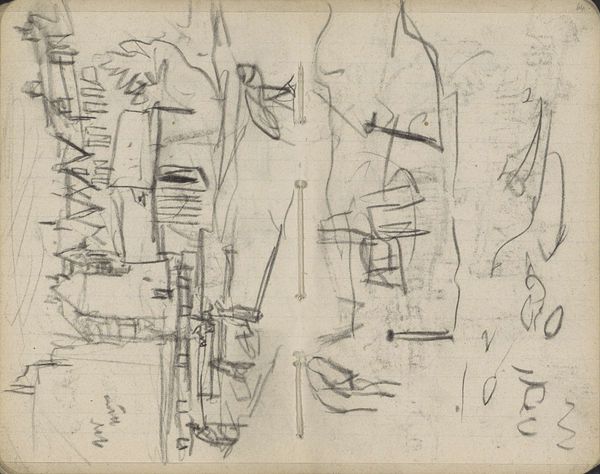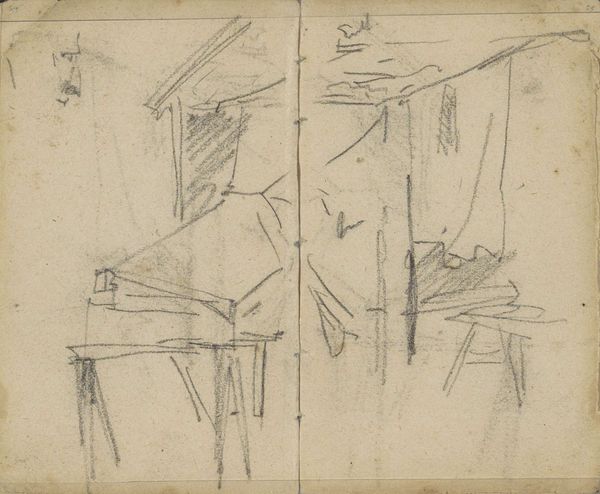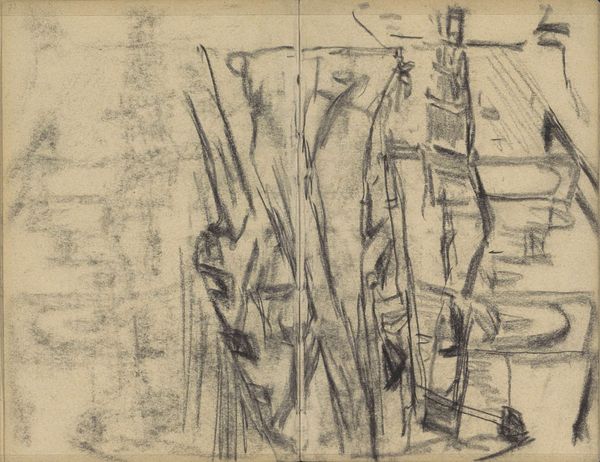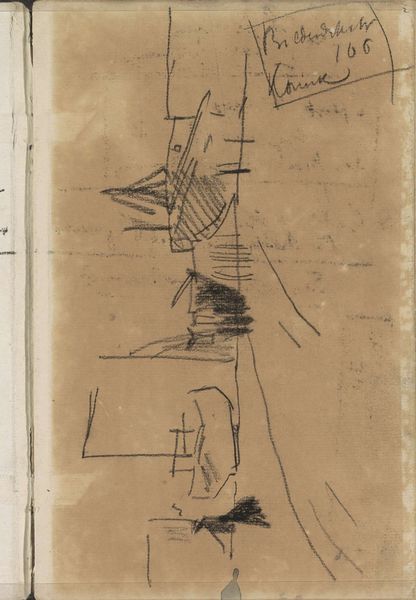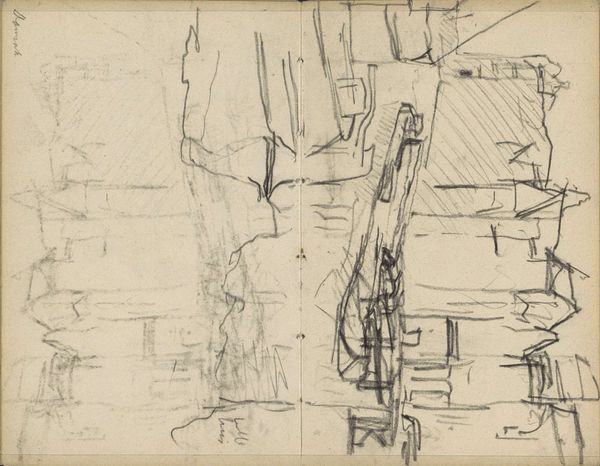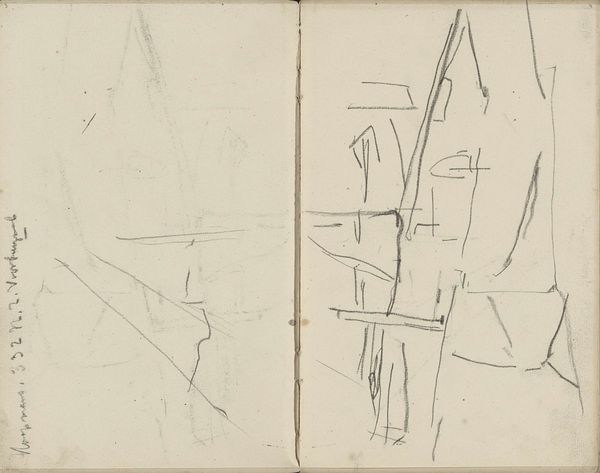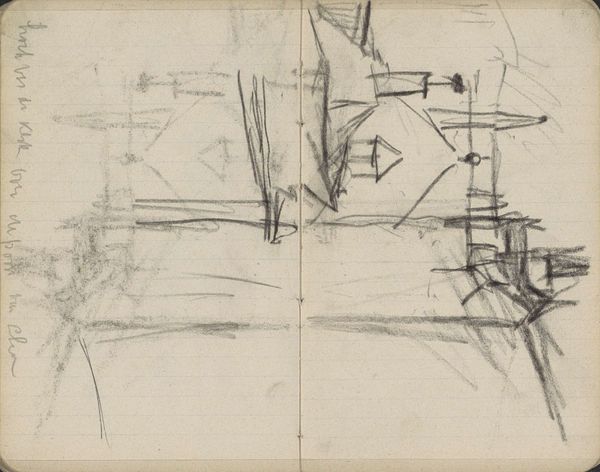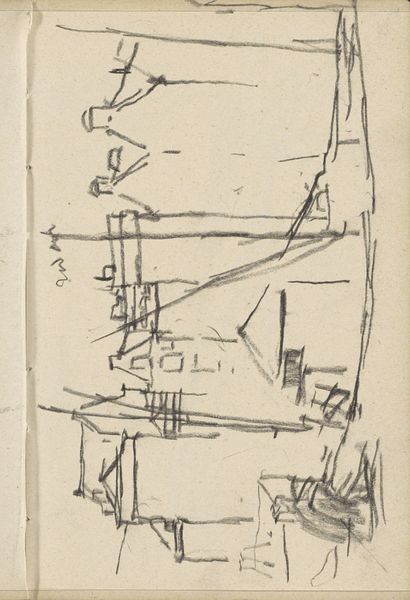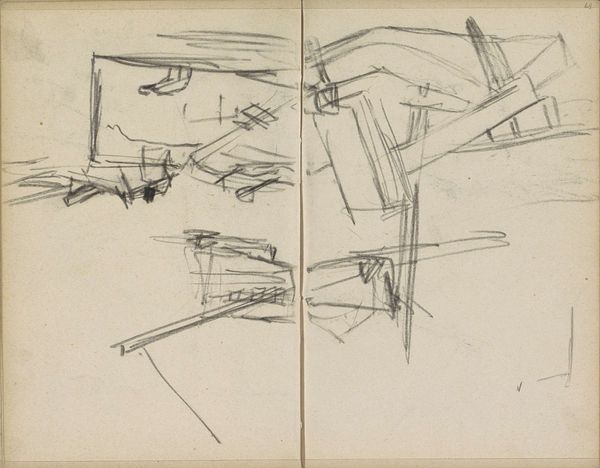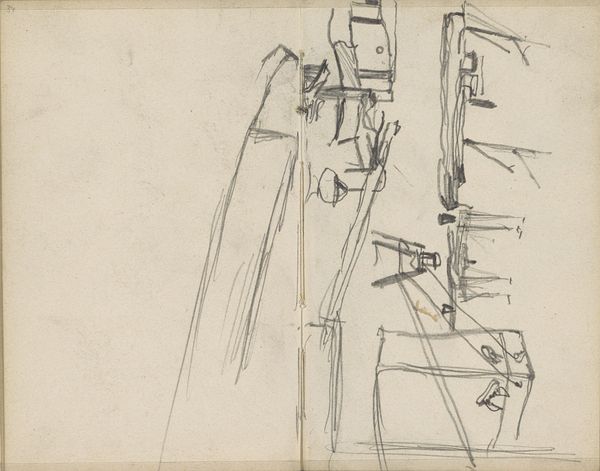
drawing, paper, charcoal
#
drawing
#
amateur sketch
#
quirky sketch
#
impressionism
#
sketch book
#
incomplete sketchy
#
paper
#
personal sketchbook
#
idea generation sketch
#
sketchwork
#
sketchbook drawing
#
cityscape
#
charcoal
#
storyboard and sketchbook work
#
sketchbook art
#
realism
Copyright: Rijks Museum: Open Domain
Curator: Here we have "Studie, mogelijk een stadsgezicht," or "Study, possibly a cityscape," a charcoal drawing by George Hendrik Breitner, created between 1881 and 1883. Editor: My immediate sense is of fragmentation. The sketch feels very raw and tentative, like a fleeting impression caught on paper. Curator: Breitner, though associated with the Amsterdam Impressionism movement, was keenly interested in documenting urban life, particularly the experiences of the working class in rapidly changing cities. How might this context influence our interpretation of this study? Editor: Well, seeing this was crafted with charcoal, and recognizing the time period, my mind wanders to the readily available materials for sketches readily to hand in burgeoning urban locales, and of the ease of creating quick, iterative marks and notations. Curator: Exactly. The immediacy afforded by charcoal and paper allowed Breitner to quickly capture the dynamism and grittiness of the cityscape. His sketches served as crucial groundwork for later paintings. Consider the political and social climate – rising industrialization, increasing class disparities – these inform his subject matter and artistic choices. What statements do these artistic choices make? Editor: You see how these sparse lines create the barest suggestion of structures – scaffolding, rooftops, perhaps even figures blurred into the background? It speaks to me of transience, and of a world caught between tradition and modernity. I think there are several subtle commentary lines being developed in his craft and labor. Curator: Precisely! And his rejection of academic polish, embracing a more informal style, could be viewed as a conscious move to represent the unvarnished realities of the working class existence during this era. Editor: I agree. When examining the piece as a material record, we can draw inferences about Breitner’s artistic process as well as broader insights into the role of art, craft, and labour at this pivotal point in European history. The paper's surface and texture, and charcoal, contribute to its inherent meaning as more than an art object. Curator: Thank you. This brief overview has hopefully provided new perspectives on Breitner's work and the socio-political narratives that underpin his artistic practice. Editor: Absolutely. Approaching the piece through a material lens offers another path to the broader meanings contained within.
Comments
No comments
Be the first to comment and join the conversation on the ultimate creative platform.
